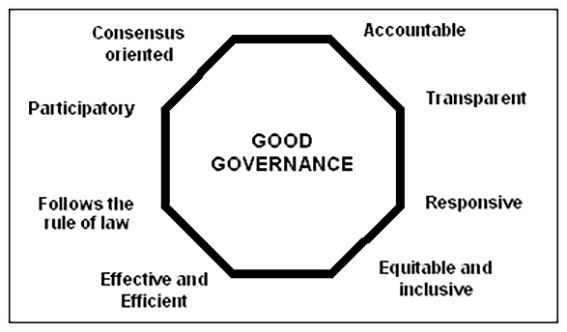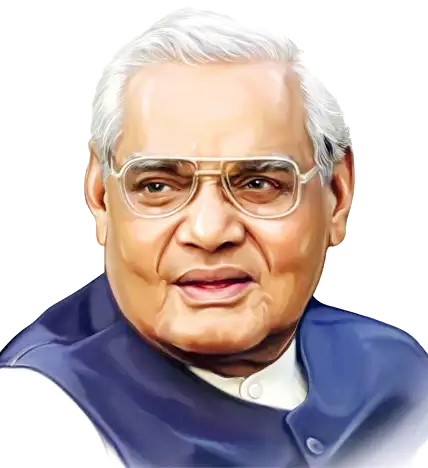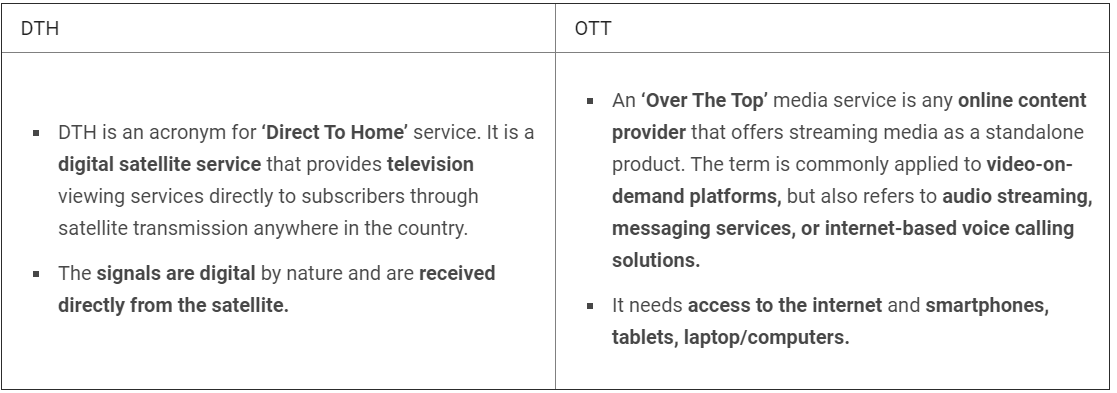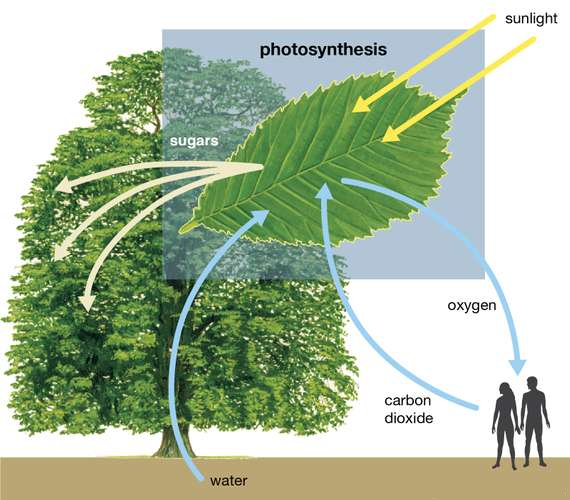Good Governance Day
Why in News
Good governance day is celebrated annually on 25th December to mark the birth anniversary of the former Prime Minister Atal Bihari Vajpayee.
- The aim is to create awareness of accountability in government among the citizens of India.
Key Points
- Governance:
- It is the process of decision-making and the process by which decisions are implemented (or not implemented).
- Governance can be used in several contexts such as corporate governance, international governance, national governance and local governance.
- Eight Characteristics of Good Governance (as identified by the United Nations):
- Participation:
- People should have a voice in decision-making, either directly or through legitimate intermediate institutions that represent their interests.
- Rule of law:
- Legal frameworks should be fair and enforced impartially, particularly the laws on human rights.
- Transparency:
- Transparency is built on the free flow of information. Processes, institutions and information are directly accessible to those concerned with them, and enough information is provided to understand and monitor them.
- Responsiveness:
- Institutions and processes try to serve all stakeholders within a reasonable timeframe.
- Consensus orientation:
- Good governance requires mediation of the different interests in society to reach a broad consensus in society on what is in the best interest of the whole community and how this can be achieved.
- Equity:
- All groups, particularly the most vulnerable, have opportunities to improve or maintain their well being.
- Effectiveness and efficiency:
- Processes and institutions produce results that meet needs while making the best use of resources.
- Accountability:
- Decision-makers in government, the private sector and civil society organisations are accountable to the public, as well as to institutional stakeholders.
- Participation:
- Challenges to Good Governance in India:
- Women Empowerment:
- Women are not adequately represented in government institutions, and other allied sectors.
- Corruption:
- The high level of corruption in India has been widely perceived as a major obstacle in improving the quality of governance.
- Delay in Justice:
- A citizen has the right to avail timely justice, but there are several factors, because of which a common man doesn’t get timely justice. One such factor is lack of personnel and logistics under disposal of court.
- Centralisation of Administrative System:
- Governments at lower levels can only function efficiently if they are empowered to do so. This is particularly relevant for the Panchayati Raj Institutions (PRIs), which currently suffer from inadequate devolution of funds as well as functionaries to carry out the functions constitutionally assigned to them.
- Criminalisation of Politics:
- The criminalisation of the political process and the unholy nexus between politicians, civil servants, and business houses are having a baneful influence on public policy formulation and governance.
- Environmental security, sustainable development.
- Challenges of globalization, liberalisation and market economy.
- Women Empowerment:
- Initiatives Taken:
- Good Governance Index:
- GGI has been launched by the Ministry of Personnel, Public Grievances & Pensions to determine the status of governance in the country.
- It assesses the impact of various interventions taken up by the State Government and UTs.
- National e-Governance Plan:
- It has the vision to “make all government services accessible to the common man in his locality, through common service delivery outlets and ensure efficiency, transparency & reliability of such services at affordable costs to realize the basic needs of the common man.”
- Right to Information Act, 2005:
- It plays an effective role in ensuring transparency in governance.
- Other Initiatives: Setting up of NITI Aayog, Make in India programme, Lokpal, etc.
- Good Governance Index:
- Atal Bihari Vajpayee was born on 25th December, 1924 in the erstwhile princely state of Gwalior (now a part of Madhya Pradesh).
- He entered in national politics during the Quit India Movement of 1942 which hastened the end of British colonial rule.
- In 1947, Vajpayee started working as a journalist for newspapers of Deendayal Upadhyaya — Rashtradharma (a Hindi monthly), Panchjanya (a Hindi weekly) and the dailies Swadesh and Veer Arjun. Later, influenced by Syama Prasad Mookerjee, Vajpayee joined the Bharatiya Jana Sangh in 1951.
- He was the former Prime Minister of India and was elected to the position twice in 1996 and 1999.
- As a parliamentarian, Vajpayee was awarded with the Pandit Govind Ballabh Pant Award for Best Parliamentarian in 1994, which defines him as "a role model par excellence for all legislators."
- He was conferred with the country's highest civilian honour, the Bharat Ratna in 2015 and second-highest civilian honour, the Padma Vibhushan in 1994.
Next Instalment of PM-KISAN
Why in News
Recently, the Prime Minister has virtually released the next instalment of financial benefit under Pradhan Mantri Kisan Samman Nidhi (PM-KISAN).
Key Points
- Rs. 18000 crores have been deposited in the bank account of more than 9 crore farmers through Direct Benefit Transfer (DBT).
- More than 1 lakh 10 thousand crore rupees have reached the account of farmers, since this scheme started in February 2019.
- Pradhan Mantri Kisan Samman Nidhi:
- Launched in February 2019, it is a Central Sector Scheme, which is being implemented by the Ministry of Agriculture and Farmers Welfare.
- On its first anniversary, the PM-KISAN Mobile App developed and designed by the National Informatics Centre (NIC) in collaboration with the Ministry of Electronics and Information Technology was launched.
- Under the scheme, the Centre transfers an amount of Rs. 6,000 per year, in three equal instalments, directly into the bank accounts of the all landholding farmers irrespective of the size of their landholdings.
- The entire responsibility of identification of beneficiary farmer families rests with the State/UT Governments.
- It aims to:
- Reduce the input cost of the farmers.
- Ensure a fair price for the crop.
- Open new markets for the farmers to sell their crop.
- Supplement the financial needs of the Small and Marginal Farmers (SMFs).
- Launched in February 2019, it is a Central Sector Scheme, which is being implemented by the Ministry of Agriculture and Farmers Welfare.
- Farmer Centric Improvements:
- Fixed one and a half times the production cost as Minimum Support Price (MSP) for the farmers as per the recommendations of the long-standing Swaminathan Committee report and has also increased the number of crops for which MSP is available.
- Added more than a thousand online agricultural mandis.
- Worked towards forming groups of small farmers so that they can work as a collective force in their region.
- A campaign is underway to form more than 10,000 Farmers Producer Organizations (FPOs) which are being given financial help.
- Free treatment up to Rs. 5 lakh under Ayushman Bharat scheme has reduced the major concern of the lives of farmers.
- Better options are provided to farmers through the agricultural reforms.
- Soil Health Card Scheme.
- Neem Coating of Urea.
- Kisan Urja Suraksha evam Utthaan Mahabhiyan (KUSUM) scheme to harness solar energy.
- Pradhan Mantri Fasal Bima Yojana (PMFBY).
100% FDI in DTH Services
Why in News
The Ministry of Information and Broadcasting (I&B) has recently approved revised guidelines for Direct-to-Home (DTH) broadcasting services, allowing 100% Foreign Direct Investment (FDI) as well as increasing the licence period to 20 years.
- Direct-To-Home (DTH) Broadcasting Service refers to the distribution of multi channel TV programmes in Ku Band by using a satellite system by providing TV signals direct to subscribers' premises.
- Ku-band is a portion of the electromagnetic spectrum. It is best known for its use in satellite broad`cast communications. Ku-band falls in the middle in terms of frequency, utilizing the approximate range of 12-18 GHz of radiofrequency.
Key Points
- License Duration:
- The licenses will be issued for a period of 20 years, compared to 10 years at present and will be renewed for a 10-year period.
- License Fee:
- The license fee has been revised from 10% of Gross Revenue (GR) to 8% of Adjusted Gross Revenue (AGR), which will be calculated by deduction of GST from GR.
- Adjusted Gross Revenue (AGR) is the usage and licensing fee that telecom operators are charged by the Department of Telecommunications (DoT).
- It is divided into spectrum usage charges and licensing fees.
- Further, broadcasting firms will have to pay the license fee on a quarterly basis, rather than the annual basis as of now.
- The license fee has been revised from 10% of Gross Revenue (GR) to 8% of Adjusted Gross Revenue (AGR), which will be calculated by deduction of GST from GR.
- Infrastructure Sharing: The government has also allowed DTH operators to share infrastructure.
- Distributors of TV channels will be permitted to share the common hardware for their Subscriber Management System (SMS) etc.
- SMS is a server important for cable TV digital systems.
- Distributors of TV channels will be permitted to share the common hardware for their Subscriber Management System (SMS) etc.
- Benefits:
- The revised guidelines may also enable DTH service providers to invest for more coverage leading to increased operations and higher growth and thereby enhanced and regular payment.
- Sharing of infrastructure by the DTH operators, may bring in more efficient use of scarce satellite resources and reduce the costs borne by the consumers.
- Background:
- The Ministry of Commerce and Industry had previously spoken of 100% FDI in the DTH sector, but because of the guidelines issued by the Information and Broadcasting [I&B] Ministry, the FDI was limited to 49%.
- Recently, the Telecom Regulatory Authority of India (TRAI) has also recommended that all Set Top Boxes (STBs) in the country must be made interoperable in order to promote overall sector growth.
- The reduction in the licence fee was recommended by Telecom Regulatory Authority of India (TRAI) in 2014.
- The DTH operators have been arguing that, since TRAI issued the New Tariff Order (NTO) for television in 2019, they have become mere carriers of channels and bouquets, with no pricing powers for these.
- The rise of Over The Top (OTT) services also seems to have impacted the DTH subscription numbers. With high competition in the segment, OTT service providers give consumers a combination of both attractive content and subscription packages.
Foreign Direct Investment
- It is an investment from a party in one country into a business or corporation in another country with the intention of establishing a lasting interest.
- Lasting interest differentiates FDI from foreign portfolio investments, where investors passively hold securities from a foreign country.
- Foreign direct investment can be made by expanding one’s business into a foreign country or by becoming the owner of a company in another country.
DTH v/s OTT
- Decline in DTH Services:
- According to a recent report by the Telecom Regulatory Authority of India (TRAI), the average active subscriber base of DTH services has seen a sharp decline of 25% coming down to 54.26 million in April to June quarter in comparison to 72.44 million in January to March of 2020.
- A recent survey suggests that almost 55% Indians prefer OTT over DTH services and almost 87% of Indians use mobile to watch videos these days.
- Convenience of OTT:
- The convenience and ease with which OTT platforms can be watched makes it more attractive. Mobile phones can be carried anywhere and the user can watch anything of the choice anywhere, anytime given the data availability.
- OTT platforms seem a better option in comparison to high tariffs and the tedious process of choosing the channel combinations in the DTH.
- Economical Data Services:
- The cost of data services have gone down drastically in the last few years which has raised the number of average users including the rural areas as well.
- Because of the availability of internet and ease of carrying smartphones, tablets or laptops, there is consumption irrespective of relatively higher charges for OTT platforms like Netflix and Amazon Prime which shows people’s demand and interest in them.
Way Forward
- India is one of the biggest single markets for audiences, with an estimated 200 million cable and satellite households. Whether OTT will take over the DTH market or not, it depends on various factors. One of them is the dependency on the internet connection in OTT platforms which is still uneven and not accessible to more than half the people of India.
- Roughly two-third of India does not actively use the internet so OTT choices become very limited. So the whole idea of OTT taking over DTH or cable connections is a little premature.
- The broadcasters must realise that audiences are won by the power of authentic programming and entertainment. In a diverse cultural milieu, with a vibrant public sphere and a sporting tradition, there is space for everyone, and the best combination of technology and pricing will win the viewer’s favour.
BBX11 Gene: Greening of Plants
Why in News
Recently, the Indian Institute of Science Education and Research (IISER) has recognized the BBX11 gene that facilitates the greening of crops.
Key Points
- About BBX11 Gene:
- The researchers discovered a mechanism where two proteins oppositely regulate the BBX11 gene to maintain optimum ranges of BBX11.
- BBX11 plays a vital role in regulation of the amount of protochlorophyllide synthesized by the plant.
- Protochlorophyllide is an intermediate in the synthesis of chlorophyll.
- If it is less, plants are unable to efficiently green in order to harvest sunlight and if the amount of protochlorophyllide is more, then photobleaching occurs.
- Photobleaching is loss of colour by a pigment.
- The quantity of protochlorophyllide synthesised needs to be proportional to the variety of enzymes available to transform them to chlorophyll.
- It is very important to regulate the amount of protochlorophyllide synthesized by the plant.
- Synthesis of Chlorophyll:
- Chlorophyll is the green pigment in plants, algae, and cyanobacteria that absorbs sunlight and uses its energy to synthesise carbohydrates from Carbon-di-Oxide (CO2) and water.
- The synthesis of chlorophyll in plants is a lengthy, multi-step process.
- When a seedling emerges from under the soil it must quickly synthesise chlorophyll to start supporting its own growth.
- In order to facilitate quick synthesis of chlorophyll, plants make a precursor of chlorophyll called ‘protochlorophyllide’ in the dark, which glows red in blue light.
- As soon as the plant comes out into the light from under the soil, light-dependent enzymes convert protochlorophyllide to chlorophyll.
- Chlorophyll is the green pigment in plants, algae, and cyanobacteria that absorbs sunlight and uses its energy to synthesise carbohydrates from Carbon-di-Oxide (CO2) and water.
- Implications:
- This discovery has many implications within the agriculture sector in tropical nations like India and can assist present results in optimising plant progress in frequently changing weather conditions.
- Due to the quickly altering weather conditions, farmers in a number of states in India, particularly in Maharashtra, are struggling with large losses in crop yields.
- This often leads to severe distress among the farming community as indicated by the high number of farmer suicides in Maharashtra for the past several years.
- Major Reasons for Crop Failure: Severe drought, high temperature and high light.
- Young seedlings emerging out of the soil are extremely sensitive to high irradiance of light. This study can provide leads to optimise plant growth under these stressful conditions.
- This discovery has many implications within the agriculture sector in tropical nations like India and can assist present results in optimising plant progress in frequently changing weather conditions.
Photosynthesis
- Photosynthesis is the process by which green plants and certain other organisms transform light energy into chemical energy.
- During photosynthesis in green plants, light energy is captured and used to convert water, carbon dioxide, and minerals into oxygen and energy-rich organic compounds.

- Factors Affecting Photosynthesis: Photosynthesis is under the influence of several factors, both internal (plant) and external.
- Internal: Number, size, age and orientation of leaves, mesophyll cells and chloroplasts, internal CO2 concentration and the amount of chlorophyll.
- External: Availability of sunlight, temperature, CO2 concentration and water.
- For example, despite the presence of a green leaf and optimal light and CO2 conditions, the plant may not photosynthesise if the temperature is very low.
- Importance:
- It would be impossible to overestimate the importance of photosynthesis in the maintenance of life on Earth.
- If photosynthesis ceased, there would soon be little food or other organic matter on Earth.
- Most organisms would disappear, and in time Earth’s atmosphere would become nearly devoid of gaseous oxygen.
- Energy produced by photosynthesis carried out by plants millions of years ago is responsible for the fossil fuels (i.e., coal, oil, and gas) that power industrial society.
Data from Chandrayaan-2 Released: ISRO
Why in News
Recently, the Indian Space Research Organisation (ISRO) has released the first set of data from the country's second mission to the Moon, the Chandrayaan-2, for the general public.
- India launched Chandrayaan-2, its second lunar exploration mission after Chandrayaan-1, from Satish Dhawan Space Centre, Sriharikota on 22nd July 2019.
- ISRO is planning mission Chandrayaan-3 in late 2021 or early 2022.
Key Points
- Standard Requirement for Public Release of Data:
- The Chandrayaan-2 data is required to be in the Planetary Data System-4 (PDS4) standard, and is required to be peer reviewed scientifically and technically before acceptance as PDS archives and declared ready for sharing with the global scientific community and the general public.
- This activity has been completed and hence the first set of data from the Chandrayaan-2 mission is now being released for the wider public use through the PRADAN portal hosted by Indian Space Science Data Centre (ISSDC).
- ISSDC is the nodal centre of planetary data archive for the planetary missions of ISRO.
- Current Data:
- The ISRO Science Data Archive (ISDA) currently holds data sets acquired by Chandrayaan-2 payloads from September-2019 to February-2020 from seven instruments.
- ISDA is the long-term archive for ISRO planetary missions.
- The ISRO Science Data Archive (ISDA) currently holds data sets acquired by Chandrayaan-2 payloads from September-2019 to February-2020 from seven instruments.
- Data Implies:
- All experiments have been performing well and the data received suggests excellent capability to deliver on the pre-launch promises.
Chandrayaan-2
- It is an integrated 3-in-1 spacecraft of around 3,877 kg consisting of an Orbiter of the Moon, Vikram (after Vikram Sarabhai) - the lander and Pragyan (wisdom) - the rover, all equipped with scientific instruments to study the moon.
- The Chandrayaan-2 was India's first attempt to land on the lunar surface.
- ISRO had planned the landing on the South Pole of the lunar surface. However, the lander Vikram hard-landed in September last year. Its orbiter, which is still in the lunar orbit, has a mission life of seven years.
- Objective:
- Try and build on the evidence of water molecules shown by Chandrayaan-1 and study the extent and distribution of water on the Moon.
- Study topography, seismography, composition of lunar surface and the lunar atmosphere.
- The study of ancient rocks and craters can offer indications of origin and evolution of the Moon.
- The South Pole region of the Moon also contains clues to the fossil records of early solar systems. Thus, it can improve our understanding of the early solar system as well.
- Map the lunar surface and prepare 3D maps of it.
Madan Mohan Malaviya Jayanti
Why in News
The Prime Minister of India paid tribute to Pt. Madan Mohan Malaviya on his 159th birth anniversary (25th December, 2020).
Key Points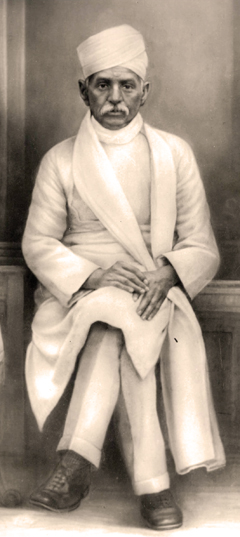
- Birth: 25th December 1861, in Allahabad (now Prayagraj) in Uttar Pradesh.
- Brief Profile:
- He was a great educationist, pioneer, an eloquent rhetorician, a national leader.
- He took part in numerous activities like the freedom struggle movements, promotion of industries, the economic and social development of the country, education, religion, social service, development of Hindi language and many other issues of national importance throughout his life.
- He was given the title of ‘Mahamana’ by Mahatma Gandhi and the second President of India, Dr. S. Radhakrishnan gave him the status of a ‘Karmayogi’.
- Role in Freedom Struggle:
- In the freedom struggle, he was midway between the Liberals and the Nationalists, the Moderates and the Extremists, as the followers of Gokhale and Tilak were respectively called.
- In 1930, when Mahatma Gandhi launched the Salt Satyagraha and the Civil Disobedience Movement, he participated in it and courted arrest.
- Role in Congress:
- He was elected as the President of the Congress committee (four times) in 1909, 1918, 1932 and 1933.
- Contributions:
- He is remembered for his role in ending the Indian indenture system, especially in the Caribbean.
- Indentured labour was a system of bonded labour that was instituted following the abolition of slavery in 1833.
- Indentured labour were recruited to work on sugar, cotton and tea plantations, and rail construction projects in British colonies in West Indies, Africa and SouthEast Asia.
- Apprehensive of the possibility of the British completely damming the flow of Ganga at Bhimgoda in Haridwar, he set up the Ganga Mahasabha in 1905.
- He was a social reformer and a successful legislator, serving as a member of the Imperial Legislative Council for 11 years (1909–20).
- He popularized the term ‘Satyamev Jayate’. However, the phrase originally belongs to the Mundaka Upanishad. The term now is the national motto of India.
- Devnagri was introduced in the British-Indian courts because of Malviya’s efforts with the British government.
- He worked immensely for Hindu-Muslim unity. He is known to have given famous speeches on communal harmony.
- He was expelled from the Brahmin community for expressing his views on caste discrimination and Brahmanical patriarchy.
- He helped establish the Hindu Mahasabha (“Great Society of Hindus”) in 1915.
- He founded the Banaras Hindu University (BHU) in 1916.
- He is remembered for his role in ending the Indian indenture system, especially in the Caribbean.
- Journalist:
- As a journalist, he started a Hindi weekly, Abhyudaya in 1907 and made it a daily in 1915 and also Hindi monthly, Maryada in 1910.
- He started an English daily- Leader in 1909.
- Malaviya was the editor of Hindi weekly, the Hindustan and Indian Union.
- He was also the Chairman of the Board of Directors of the Hindustan Times for many years.
- Death: He died on 12th November, 1946, at the age of 84.
- Awards and Honours:
- In 2014, he was posthumously conferred with Bharat Ratna, the country's highest civilian award.
- In 2016, the Indian Railways started the Varanasi-New Delhi Mahamana Express in the leader’s honour.
Satkosia Tiger Reserve
Why in News
Recently, the National Tiger Conservation Authority has asked Odisha to submit a status report on the adverse impact of tourism on Satkosia Tiger Reserve.
Key Points
- Satkosia Tiger Reserve, Bhubaneswar comprises two adjoining sanctuaries of central Odisha named as Satkosia Gorge Sanctuary and Baisipalli Sanctuary.
- These two sanctuaries together covering an area of 963.87 sq km were notified as Tiger Reserve in December 2007.
- Lying in a transitional zone extending between the Chhota Nagpur Plateau and the Deccan Plateau, the tiger reserve exhibits endemic life forms of both biotic provinces.
- Flora and Fauna:
- The area supports moist deciduous forest, dry deciduous forest and moist peninsular Sal forest.
- This area is the home for Tiger, Leopard, Elephant, Gaur, Chousingha, Sloth bear, Wild dog, varieties of resident and migratory birds, reptilian species, etc.
- Crocodile Conservation:
- In March 1974, the Forest Department of the Government of Orissa with technical support from the United Nations Development Programme (UNDP) and the Food and Agriculture Organization (FAO) started a breeding programme of crocodiles.
- In March 1975, the Gharial Research and Conservation Unit (GRACU) was started, which has done pioneering work in crocodile conservation in India.
- The activities include conservation breeding, releasing of reared crocodiles into the wild and its rehabilitation.
- Satkosia Gorge Sanctuary:
- It owes its name to the narrow stretch of River Mahanadi i.e. “Sat-Kosh'' or seven miles long near Tikarpada, 60 km south of Angul.
- The area was made a sanctuary in 1976 and spreads out in four districts of Odisha namely Angul, Budh, Cuttack and Nayagarh.
- The Satkosia Gorge is a unique feature in geomorphology of India because here Mahanadi cuts right across the Eastern Ghats and has formed a magnificent gorge.
- Fauna: It is known for Gharials, Mugger crocodile and rare freshwater turtles like Chitra indica and Indian softshell turtle.
- Baisipalli Sanctuary:
- It gets its name from the 22 settlements existing within its span.
- It was given the status of sanctuary in May 1981.
- It is located where the Mahanadi River passes through a gorge in the Eastern Ghats mountains in Nayagarh District.
- The whole area is a part of the Deccan Peninsula Biogeographic Zone, Eastern Plateau province and Eastern Ghat sub-division.
- Flora and Fauna: It is a sal dominated forest with a significant number of tigers, leopards, elephants, herbivores like Chousingha and water birds, reptilians, etc.
Major Protected Areas in Odisha
- National Parks:
- Wildlife Sanctuaries:
- Badrama WLS
- Chilika (Nalaban) WLS
- Hadgarh WLS
- Kotagarh WLS
- Nandankanan WLS
- Lakhari Valley WLS
- Gahirmatha (Marine) WLS
Kamov-226T : Utility Helicopters
Why in News
The Indian Army is going to approach the Defence Ministry for a waiver to take the Kamov-226T (Ka-226T) utility helicopters with Russia.
- In 2015, India and Russia concluded an Inter-Governmental Agreement (IGA) for 200 Ka-226T helicopters estimated to cost over USD 1 billion.
- The Kamov-226T is meant to replace the ageing and obsolete Cheetah and Chetak fleets of the Indian Army and the Air Force.
Key Points
- About Kamov-226T helicopter:
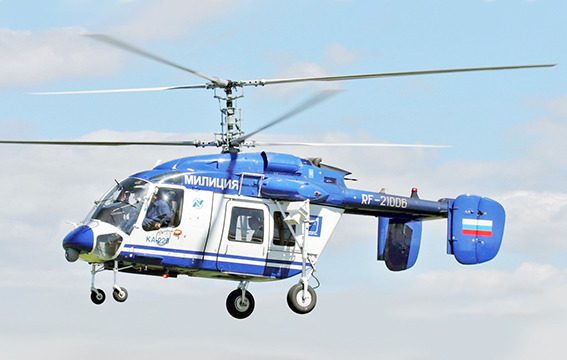
- Design: The Ka-226T is a design of Russia's famed Kamov design bureau.
- Assembling: A joint venture India Russia Helicopters Limited (IRHL) has been set up between Hindustan Aeronautics Limited (HAL) and Russian Helicopters (RH) which will assemble the helicopters in India.
- Payload Capacity:
- It is a light helicopter, with a maximum take-off weight of over 3.5 tonnes and can carry a payload of up to 1 tonne.
- Special Features:
- The Ka-226T uses coaxial rotors, that is, it has two sets of rotors mounted one on top of the other and typically no tail rotor.
- Coaxial rotors give a helicopter improvements in lift and payload capacity over conventional choppers.
- This is especially advantageous in high-altitude environments where an aircraft's performance at take-off tends to diminish due to the lower air density.
- The Ka-226T also has a unique, detachable 'mission' compartment instead of a conventional cabin.
- This allows the helicopter to be adapted for different roles such as surveillance and cargo delivery.
- The Ka-226T uses coaxial rotors, that is, it has two sets of rotors mounted one on top of the other and typically no tail rotor.
- Issues with the Old Fleet of Helicopters:
- About 75% of the Army’s fleet of Cheetah and Chetak helicopters is over 30 years old. Some of them are about 50 years old and they need urgent replacements.
- Operational capability has been impacted due to deficiencies and non-availability of replacement.
- About 75% of the Army’s fleet of Cheetah and Chetak helicopters is over 30 years old. Some of them are about 50 years old and they need urgent replacements.
- Requirement of Helicopters in Indian Army: There is a requirement of around 400 such helicopters in the army.

